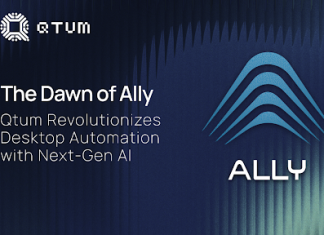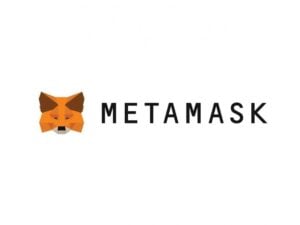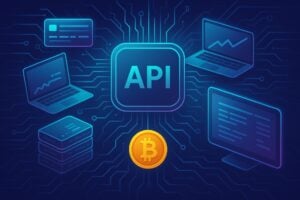The global NFT gaming market on blockchain is set for significant growth in the coming years, according to a report published by Grand View Research, a leading market intelligence firm.
Oftentimes, The Cryptonomist has cited the successes of the present in the industry, though Grand View Research’s report is steeped in the glorious future of blockchain gaming.
The report predicts that the market will reach a staggering $301.53 billion by 2030, driven by the transition from traditional gaming to blockchain-based alternatives.
Key factors in the success of the NFT gaming industry on blockchain
One of the key factors driving this growth is the attractiveness of the unique features of blockchain games, such as asset ownership, transparency, and the ability to monetize the game.
Unlike traditional games, where players often have limited control over their in-game assets, blockchain games offer a decentralized system that allows players to truly own their digital assets.
This ownership not only provides a sense of security, but also opens up new possibilities for players to trade, sell, and leverage their assets within and outside the game ecosystem.
In addition, blockchain technology introduces a level of transparency that is lacking in traditional gaming. The decentralized nature of blockchain ensures that all transactions and actions within the game are recorded and verifiable, reducing the risk of fraud and cheating.
This transparency not only enhances the gaming experience, but also attracts a wider range of players who value fairness and trust in the game.
The report suggests that market growth will be fueled by a compound annual growth rate (CAGR) of 68.3% from 2023 to 2030.
This rapid expansion can be attributed to the increasing popularity of blockchain technology and growing interest in decentralized finance (DeFi) applications.
As more people become familiar with the benefits of blockchain technology in various sectors, including finance and supply chain, the appeal of the blockchain game is expected to skyrocket.
The metaverse will mark a key role for blockchain games
The rise of metaverse gaming is expected to play a significant role in driving the adoption of blockchain gaming.
A metaverse is a virtual reality space in which users can interact with a computer-generated environment and other users in real time.
With the recent COVID-19 pandemic forcing people to stay indoors and seek entertainment options from the comfort of their homes, the demand for immersive and socially engaging gaming experiences has increased.
As a result, the integration of metaverse features into blockchain gaming has gained traction, attracting a wider audience eager to explore these interactive virtual worlds.
The introduction of metaverse capabilities into blockchain games offers players a more complete and immersive experience.
These features can include customizable avatars, virtual economies, and in-game social interactions.
Players can not only enjoy the game itself, but also participate in various virtual activities, such as attending virtual concerts, trading virtual assets, and even building their own virtual businesses.
The combination of blockchain technology and metaverse features creates a unique gaming ecosystem that appeals to a wide range of players looking for new and immersive experiences.
In addition, the integration of blockchain technology into games not only benefits players, but also opens up new opportunities for developers and publishers.
Blockchain-based game platforms allow developers to create and deploy decentralized applications (dApps) that run on the blockchain.
This decentralized nature eliminates the need for intermediaries and provides developers with direct access to their target audience.
Innovation in blockchain implementation
By leveraging blockchain technology, developers can implement innovative game mechanics, such as play-to-earn models, in which players can earn valuable in-game assets or cryptocurrencies through in-game achievements.
This creates a unique incentive structure that rewards players for their time and skills, thereby increasing player engagement and loyalty.
In addition, blockchain game platforms offer developers a secure and transparent environment for crowdfunding and fundraising through initial coin offerings (ICOs) or sales of non-fungible tokens (NFTs).
These methods allow developers to secure the funding they need to bring their game projects to life, while offering investors the opportunity to participate in the success of the game by holding valuable tokens or NFTs.
The report also highlights the growing adoption of blockchain technology by major gaming companies and industry leaders.
Established players in the gaming industry recognize the potential of blockchain in revolutionizing the gaming landscape and are actively exploring ways to incorporate it into their existing offerings.
This mainstream acceptance and integration of blockchain into gaming further validates the market’s potential and contributes to its expected growth.
In addition, the report suggests that the Asia-Pacific region will dominate the blockchain gaming market during the forecast period.
The region has a strong gaming culture and a large player base, making it an attractive market for blockchain game companies.
In addition, the presence of technologically advanced countries such as China, South Korea and Japan, that have already embraced blockchain technology in various sectors, provides a favorable ecosystem for the growth of blockchain gaming.
The industry’s challenges to overcome
Despite the promising prospects for GameFi, there are still challenges to overcome.
One of the main obstacles is scalability, as blockchain networks currently face limitations in terms of transaction execution speed.
The high demand for real-time gaming and interactions requires scalable solutions to ensure a smooth and seamless gaming experience for players.
Interoperability between different blockchain networks is another challenge to be addressed.
As the number of blockchain gaming platforms and ecosystems increases, guaranteeing compatibility and seamless asset transfer between different platforms will be critical to the growth and sustainability of the industry.
In conclusion, the global blockchain gaming market is poised for substantial growth in the coming years, driven by the shift from traditional gaming to blockchain-based alternatives.
The appeal of asset ownership, transparency, and monetization of gaming, along with the introduction of game metaverses, is attracting a wider audience and creating new opportunities for developers and publishers.
With major gaming companies embracing blockchain technology and the Asia-Pacific region leading the way, the market is expected to reach a value of $301.53 billion by 2030.
However, scalability and interoperability challenges must be addressed to unlock the full potential of blockchain gaming and ensure its long-term success.
As the industry evolves and innovates, blockchain gaming has the potential to redefine the gaming experience and shape the future of the gaming industry.









